Owls are captivating birds that have inspired legends and myths throughout history, and capturing their beauty through the lens of a camera is a truly unforgettable experience. With their enigmatic allure and captivating presence, owls stand as timeless subjects in the realm of wildlife photography. These nocturnal predators, adorned with velvety plumage and piercing eyes, evoke a sense of mystery and fascination that beckons photographers to capture their essence. From the silent swoop of a barn owl in flight to the intense gaze of a great horned owl perched among ancient trees, each moment spent observing these majestic birds offers a glimpse into a world both ancient and untamed. Several species of owls are present in abundance in West Texas, although finding them can be difficult. Let’s learn some things about owls that might improve our chances of locating and photographing them. With some luck, we might have an incredible opportunity to photograph one of the most fascinating and elusive creatures of the night.
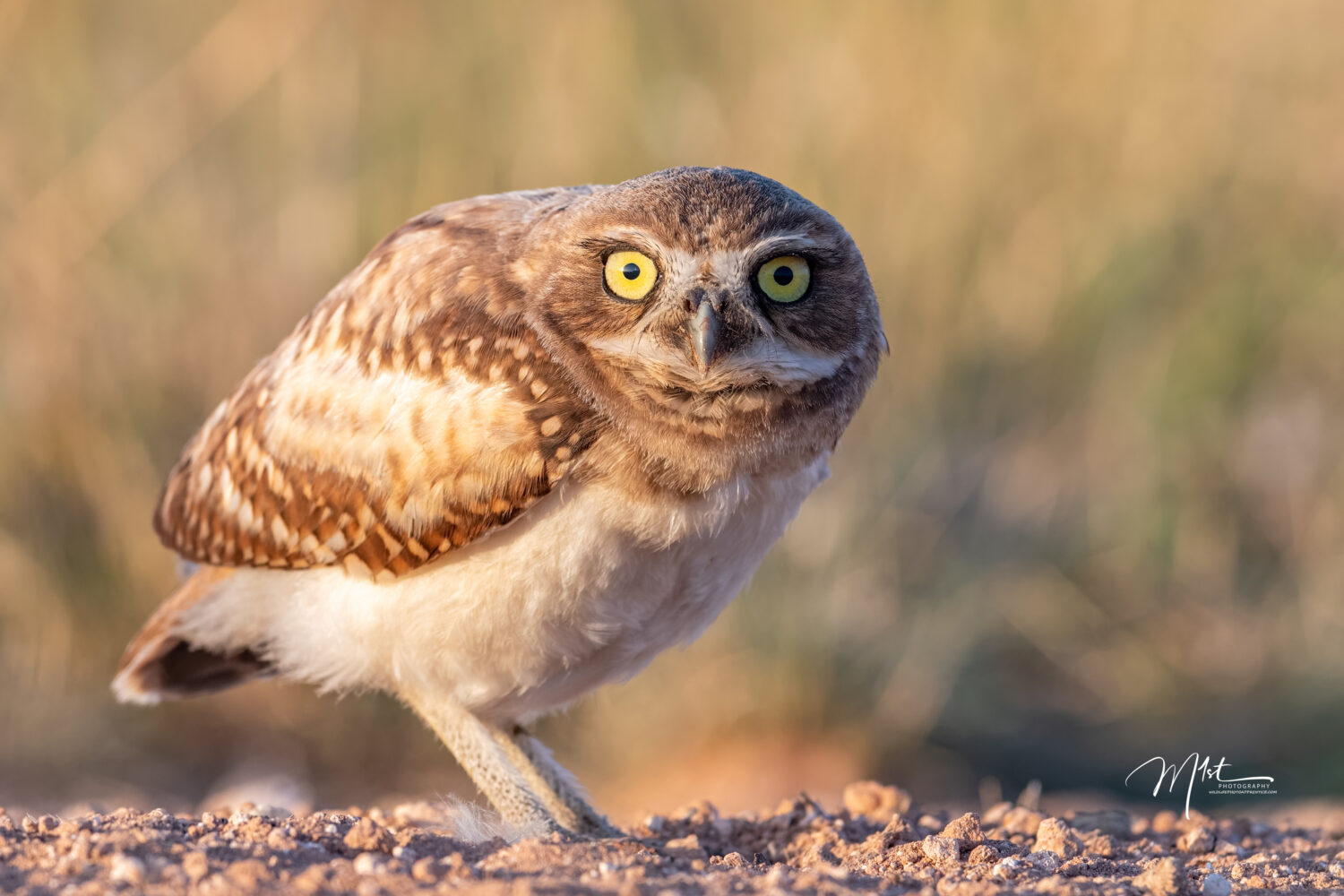
Owls are birds of prey that belong to the Strigiformes order. They are found all around the world, except for Antarctica. There are over 200 different species of owls, ranging in size from the tiny Elf Owl, which is only around 5 inches tall, to the Eurasian Eagle-Owl, which can reach up to 28 inches in length. Owls have a unique appearance, with large eyes, a flat face, and a hooked beak. They have excellent night vision, and their eyes are so large that they cannot move them in their sockets. Instead, they have to turn their entire head to see different things. Owls are known for their silent flight, which is due to their specialized feathers that muffle sound. This allows them to sneak up on their prey without being heard. Owls are carnivorous and feed on a variety of prey, including rodents, insects, fish, and even other birds. Some species of owls, such as the Snowy Owl, have been known to hunt larger prey like rabbits and hares. Owls are solitary creatures, except during the breeding season when they pair up and mate. They nest in trees, caves, or other hidden locations, and their chicks are born covered in fluffy down feathers.
Interestingly, the color of an owl’s eyes can hold some significance. The color of an owl’s eyes can provide clues about its species and its activity patterns. certain species of owls have distinct activity patterns that can influence the perception of their eye color.
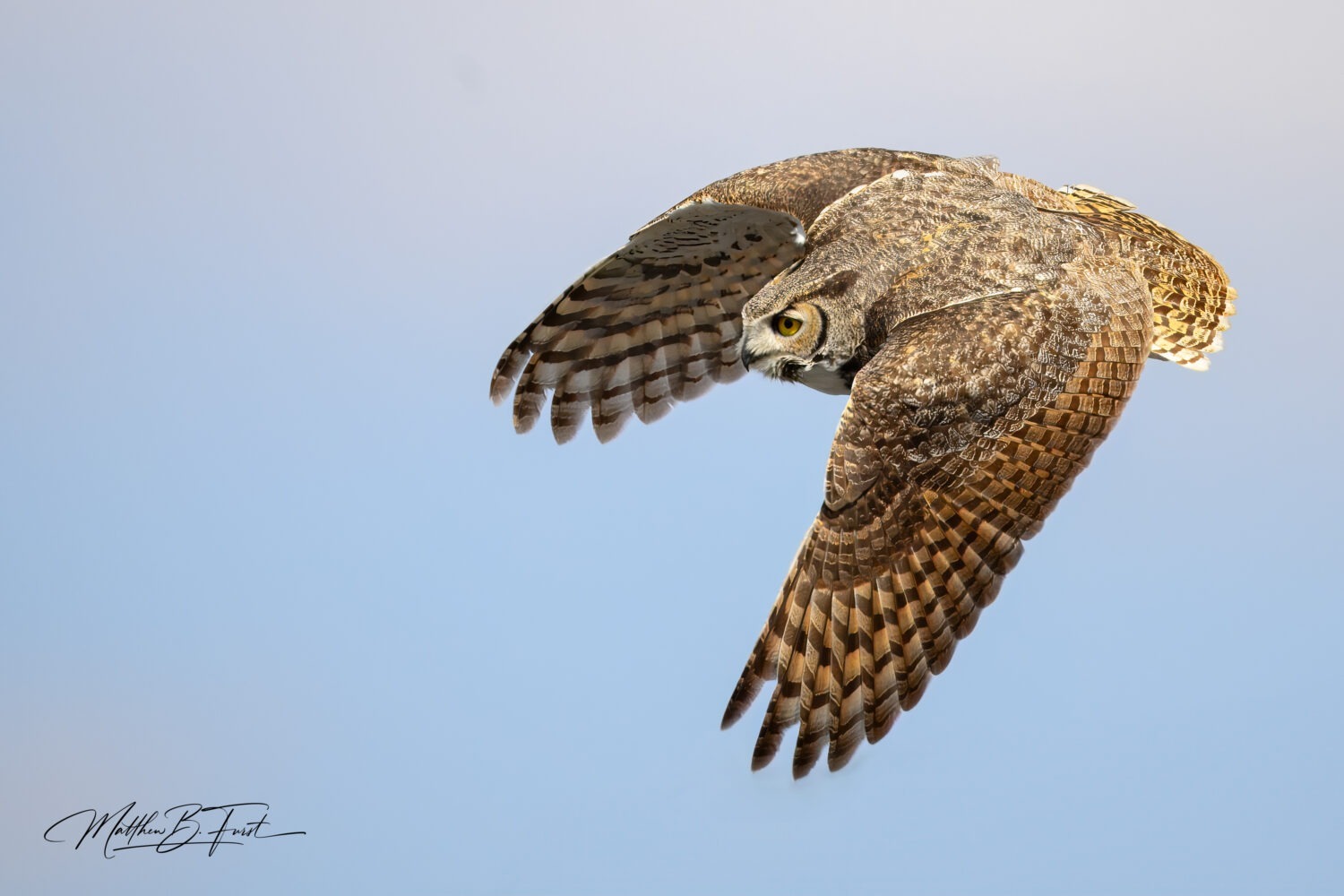
For example, owls with darker eyes, such as the barn owl (Tyto alba), often exhibit crepuscular or nocturnal activity patterns. Their dark eyes are adapted to low light conditions, allowing them to hunt effectively during dawn, dusk, and nighttime hours. On the other hand, owls with lighter-colored eyes, such as some species of screech owls (Megascops spp.), may also be active during twilight hours but might have adaptations for hunting in slightly brighter conditions compared to owls with darker eyes. While the color of an owl’s eyes doesn’t directly determine its activity patterns, it does reflect adaptations to their respective habitats and hunting strategies. Ultimately, an owl’s activity patterns are influenced by a combination of factors including its species, habitat, prey availability, and individual behavior rather than solely by eye color.
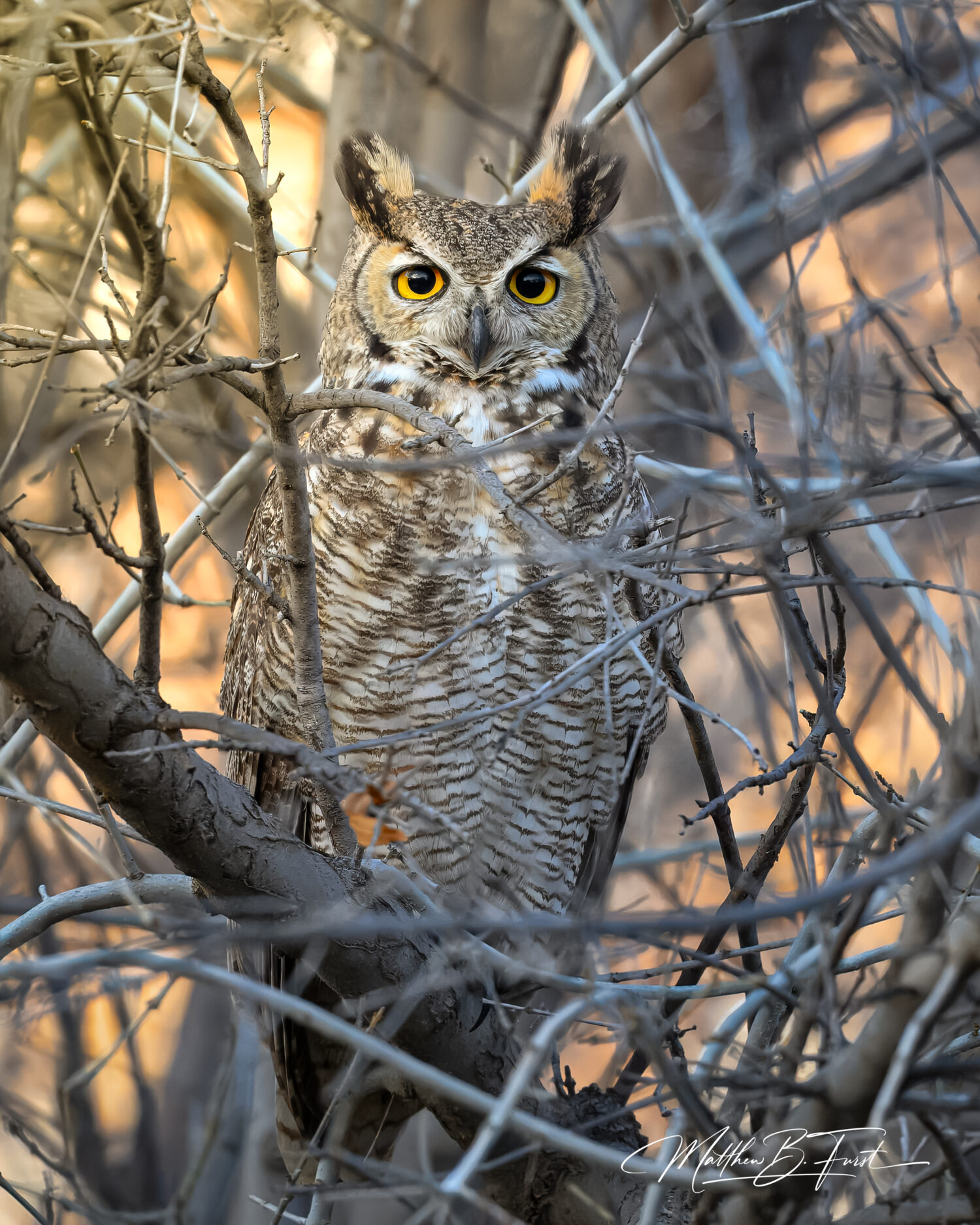
There have been 17 species of owls documented in Texas. Here is some useful information about the various owl species I have encountered during my wildlife photography adventures in West Texas.
Great Horned Owls
This is one of the most common owl species in North America. Great Horned Owls are one of the largest owl species in North America, with a wingspan of up to 5 feet and a weight of up to 4 pounds. They have distinctive ear tufts on their heads, which are not actually ears, and are often mistaken for horns. They also have piercing yellow eyes, a hooked beak, and mottled brown and white plumage. Great Horned Owls can be found in a wide range of habitats, including forests, deserts, and grasslands, throughout North and South America. They are also known to adapt to urban environments, making their nests in parks and gardens in some cities. Great Horned Owls are apex predators, capable of hunting a wide variety of prey, including small mammals, birds, reptiles, and even other owls. They have powerful talons and a strong beak allowing them to quickly dispatch their prey. Great Horned Owls breed in the late winter and early spring, with pairs staying together for life. They typically build their nests in trees or on cliffs, and will often take over the nests of other large birds such as eagles or hawks. Great Horned Owls are known for their distinctive hooting call, which can often be heard at night. Males have a deeper and louder hoot than females, and pairs will often call to each other in duets. Great Horned Owls are known for their adaptability and resilience, which have helped them thrive in a variety of habitats and climates. They are able to tolerate cold and hot temperatures and can survive for long periods without food or water.
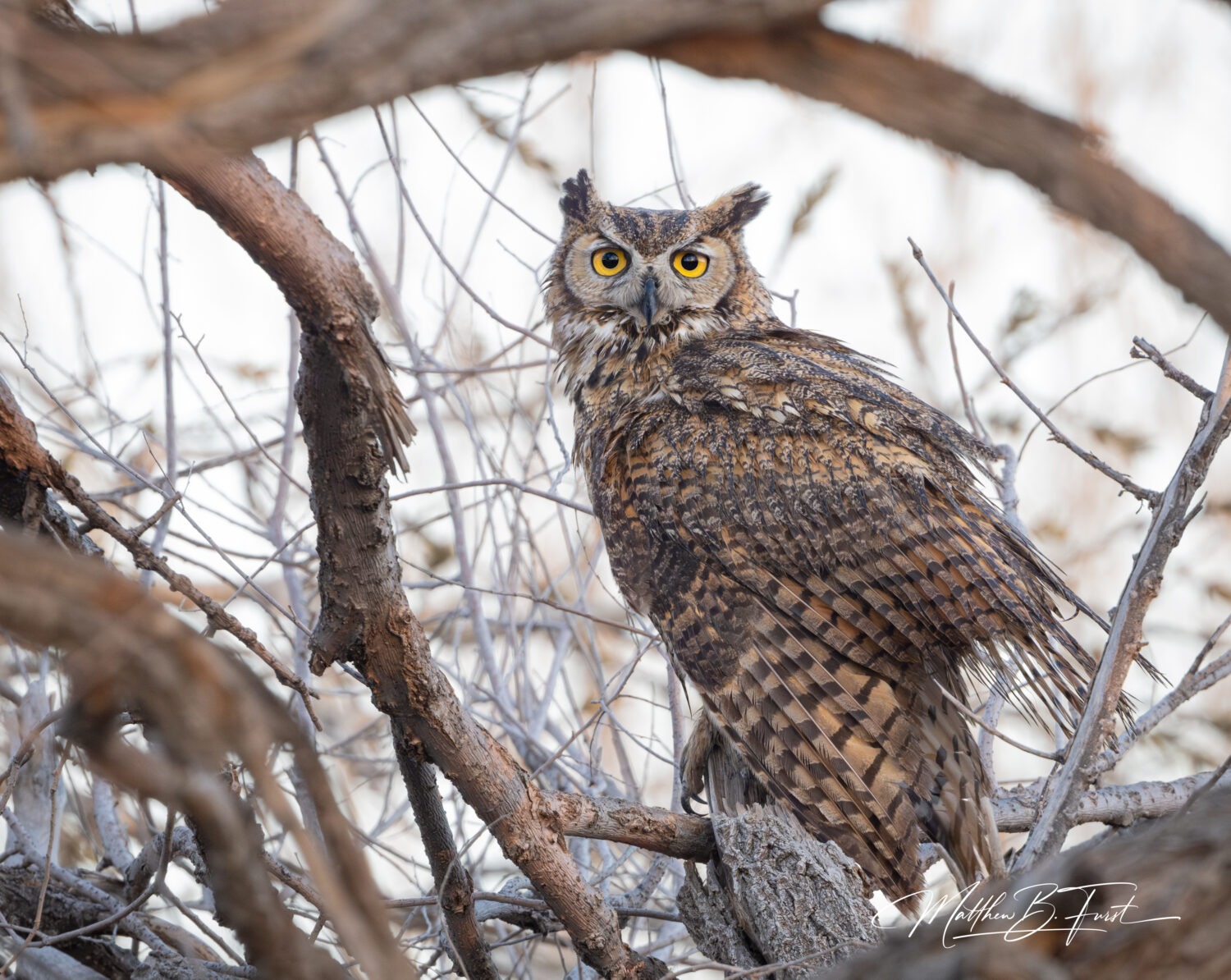
Barn Owls
Barn Owls are one of the most distinctive owl species due to their heart-shaped facial disk and ghostly white appearance. Their wings are long and broad, and their feathers are soft and fluffy, which allows them to fly almost silently. Barn Owls can be found in a wide variety of habitats, including grasslands, agricultural fields, and wetlands, throughout most of the world, except for Antarctica and some remote islands. Barn Owls are nocturnal hunters and feed on a variety of small mammals, such as rodents and shrews. They have exceptional hearing and can locate their prey by sound alone, allowing them to hunt in complete darkness. Barn Owls typically breed in the spring and summer and often nest in tree cavities, abandoned buildings, or artificial nest boxes. Females lay 4-6 eggs per clutch, and both parents participate in incubating the eggs and raising the young. Barn Owls have a distinctive screeching call that can sound like a high-pitched scream. They also make other vocalizations, including hisses and snoring sounds. Barn Owls are considered a species of conservation concern in some areas due to habitat loss and pesticide use, which can negatively impact their prey populations. However, they are not currently considered endangered, and efforts to provide artificial nest boxes and protect their habitat have helped to stabilize some populations.
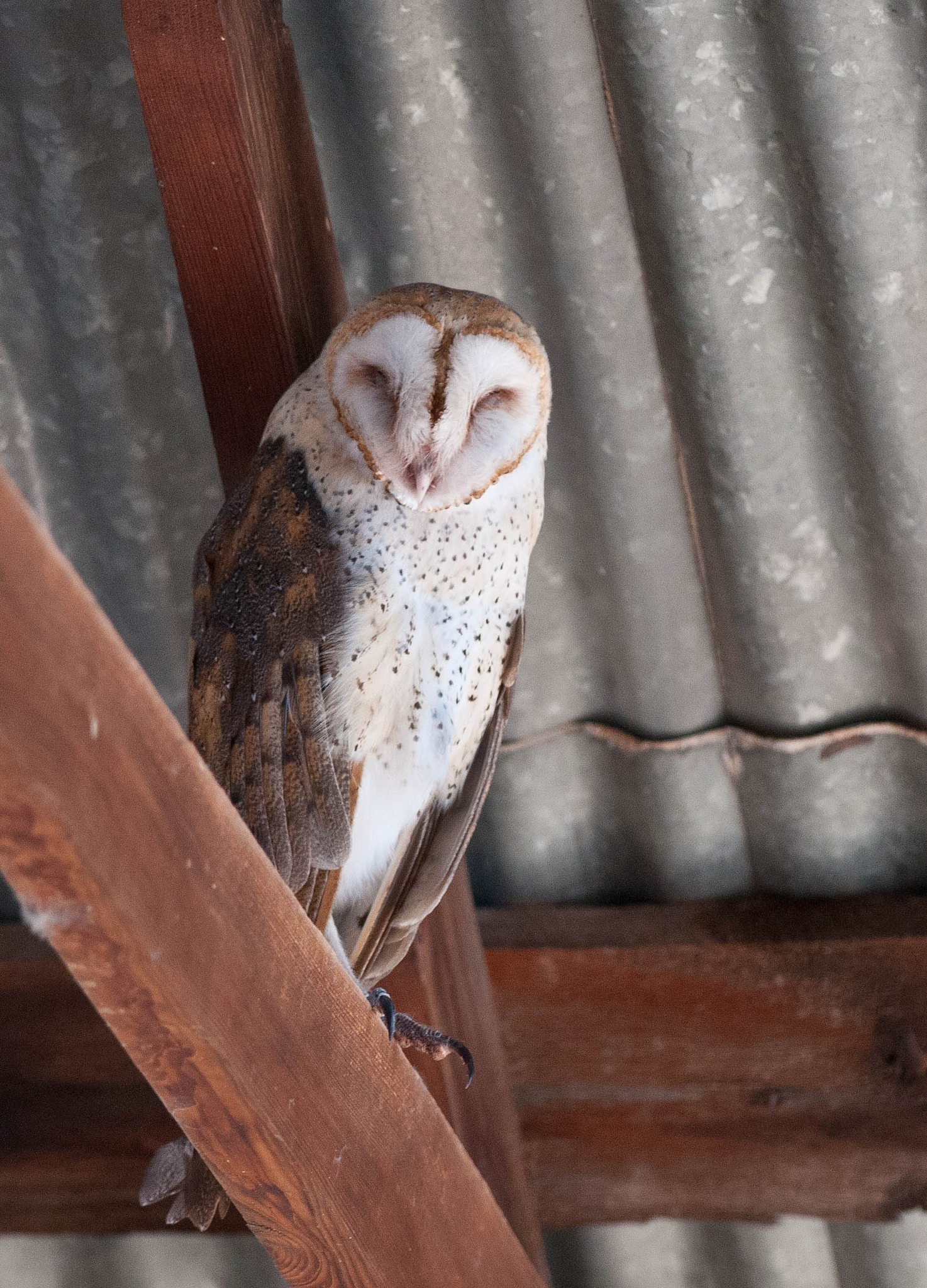
Burrowing Owls
This species is often found in open grasslands and deserts, where they nest in abandoned burrows of prairie dogs and other small mammals. Burrowing owls are known for their long legs and comical expressions, and they are active during the day as well as at night. Burrowing Owls are small and have a round head, long legs, and a short tail. They have distinctive white eyebrows and bright yellow eyes. Their feathers are brownish with white spots on the wings and tail. Burrowing Owls are found in open grasslands, deserts, and prairies of North and South America. They prefer habitats with low-growing vegetation and areas with burrows, such as prairie dog towns or abandoned burrows made by other animals. Burrowing Owls are active during the day and feed on a variety of small prey, including insects, rodents, and lizards. They will also occasionally eat small birds. Burrowing Owls nest in burrows, either digging their own or using abandoned burrows made by other animals. They typically lay 4-12 eggs per clutch and both parents participate in incubating the eggs and caring for the young. Burrowing Owls are known for their unique behavior, including their habit of standing outside their burrows during the day and bobbing their heads up and down. They are also social birds and often nest in colonies, which can include multiple families.
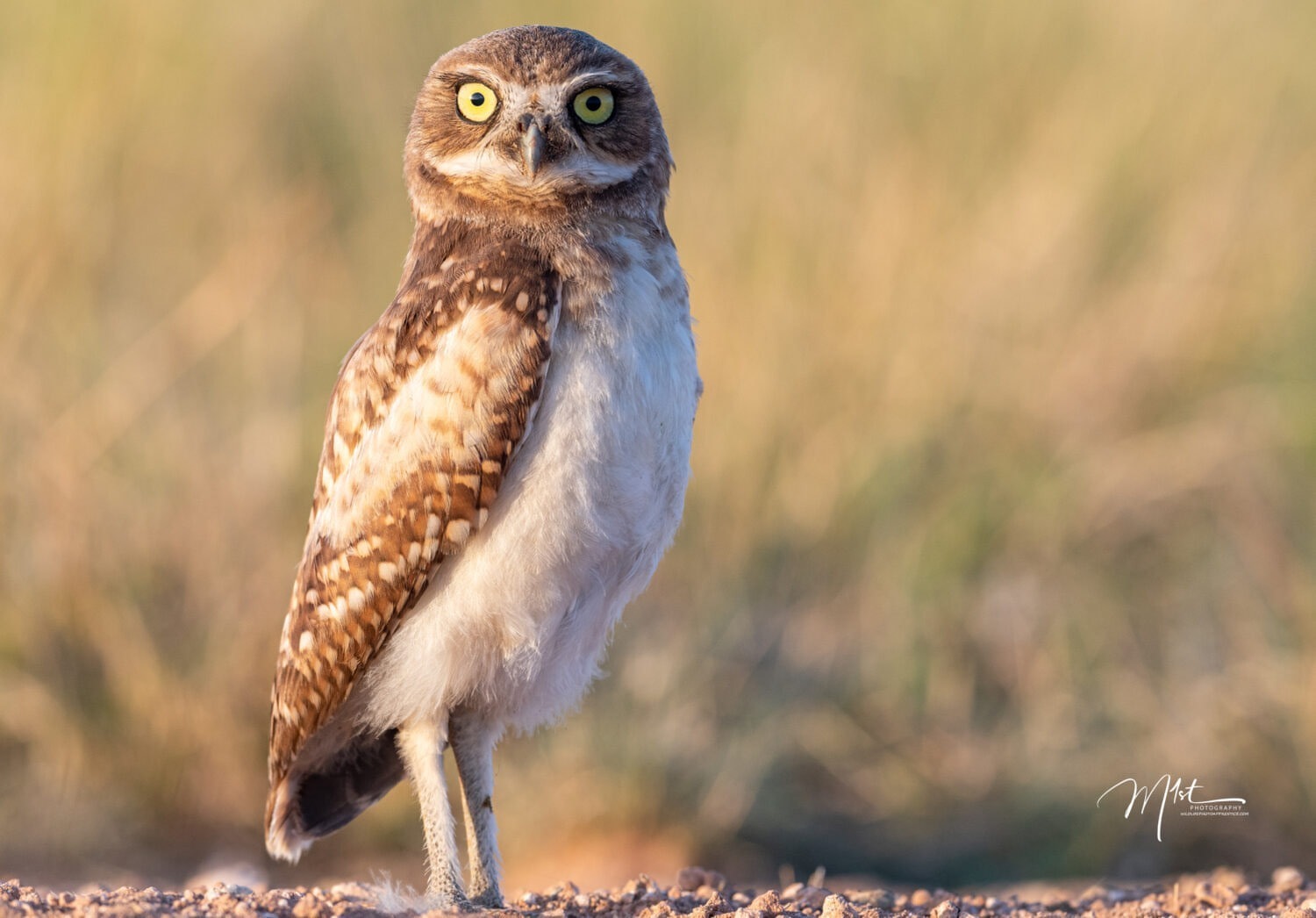
Long-eared Owls
These owls are not as common as some of the other owl species that inhabit West Texas. Long-eared Owls prefer to nest in dense forests and woodlands, and they are also known to roost in groups during the winter months. While they are generally a secretive and elusive species, they can occasionally be seen and heard during the breeding season, which typically occurs from March to May. Their distinctive ear tufts, striped plumage, and yellow eyes make them a fascinating subject for wildlife photographers who are lucky enough to spot them. They are also known for their unique defensive behavior, where they will elongate their body and raise their ear tufts to make themselves look larger when threatened. Long-eared Owls are generally solitary and roost during the day in dense foliage or in the lower branches of trees. Long-eared Owls sometimes group together in “parliaments” during the non-breeding season. Parliaments are groups of owls that roost together in trees, usually in dense coniferous forests. These groups can range in size from a few individuals to dozens of birds. During the breeding season, however, Long-eared Owls tend to be solitary and defend their territories aggressively against other owls.
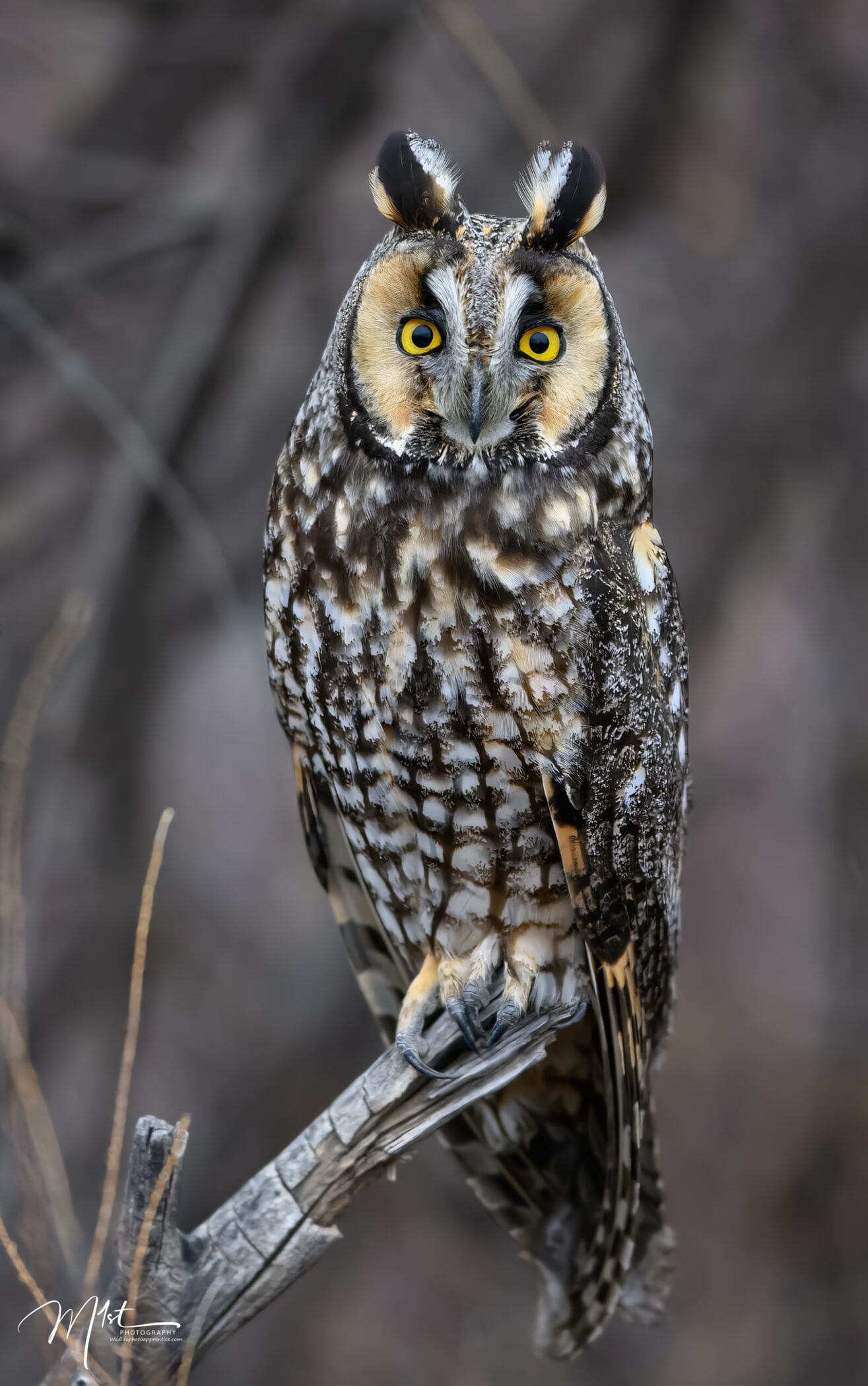
Snowy Owls
Snowy owls, characterized by their striking white plumage and piercing yellow eyes, are majestic birds of prey native to the Arctic tundra. These formidable hunters primarily feed on small mammals like lemmings and rodents, utilizing their keen vision and silent flight to capture prey. Snowy owls are rarely spotted in Texas due to their typical habitat in Arctic regions, but occasional sightings occur during their winter migrations. These majestic birds may venture southward seeking prey and suitable hunting grounds during periods of scarcity in their native environment. Such sightings often spark excitement among birdwatchers and wildlife enthusiasts, highlighting the diverse and unpredictable nature of avian migration patterns.
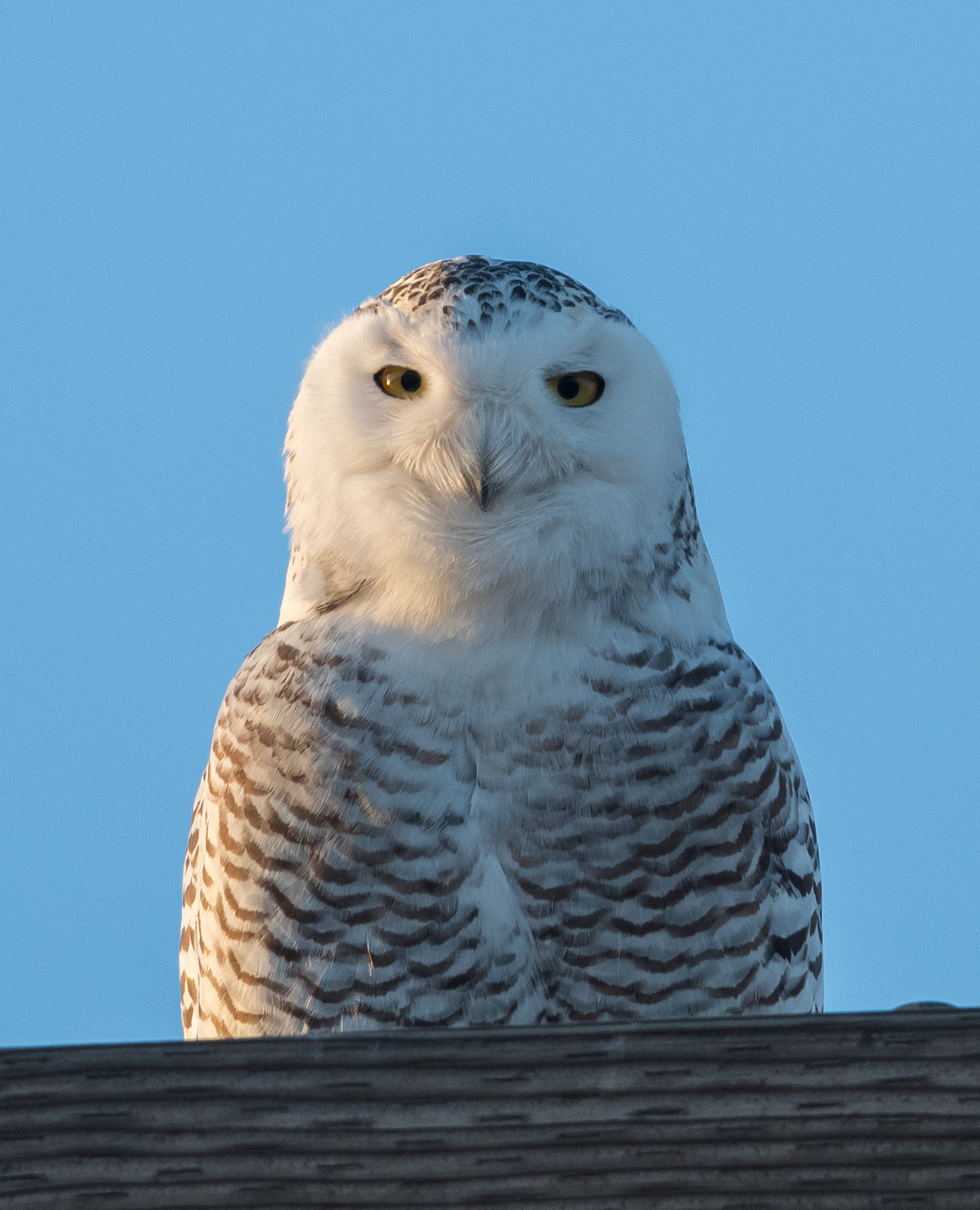
Finding Owls
Finding owls in the wild can be a challenging but rewarding experience for wildlife photographers. Here are a few tips I have found can increase your chances of spotting and photographing owls in West Texas:
Start by familiarizing yourself with the owl species that inhabit West Texas. Common species in the area include the great horned owl, burrowing owl, barn owl, and screech owl. Understanding their habitats and behaviors will help you narrow down potential locations.
Owls are often found in diverse habitats such as woodlands, grasslands, desert scrub, and agricultural areas. Look for habitats with suitable roosting sites such as trees, rocky outcrops, abandoned buildings, or burrows. Tree-lined open farm fields offer an ideal location due to the availability of concealment next to open hunting grounds.
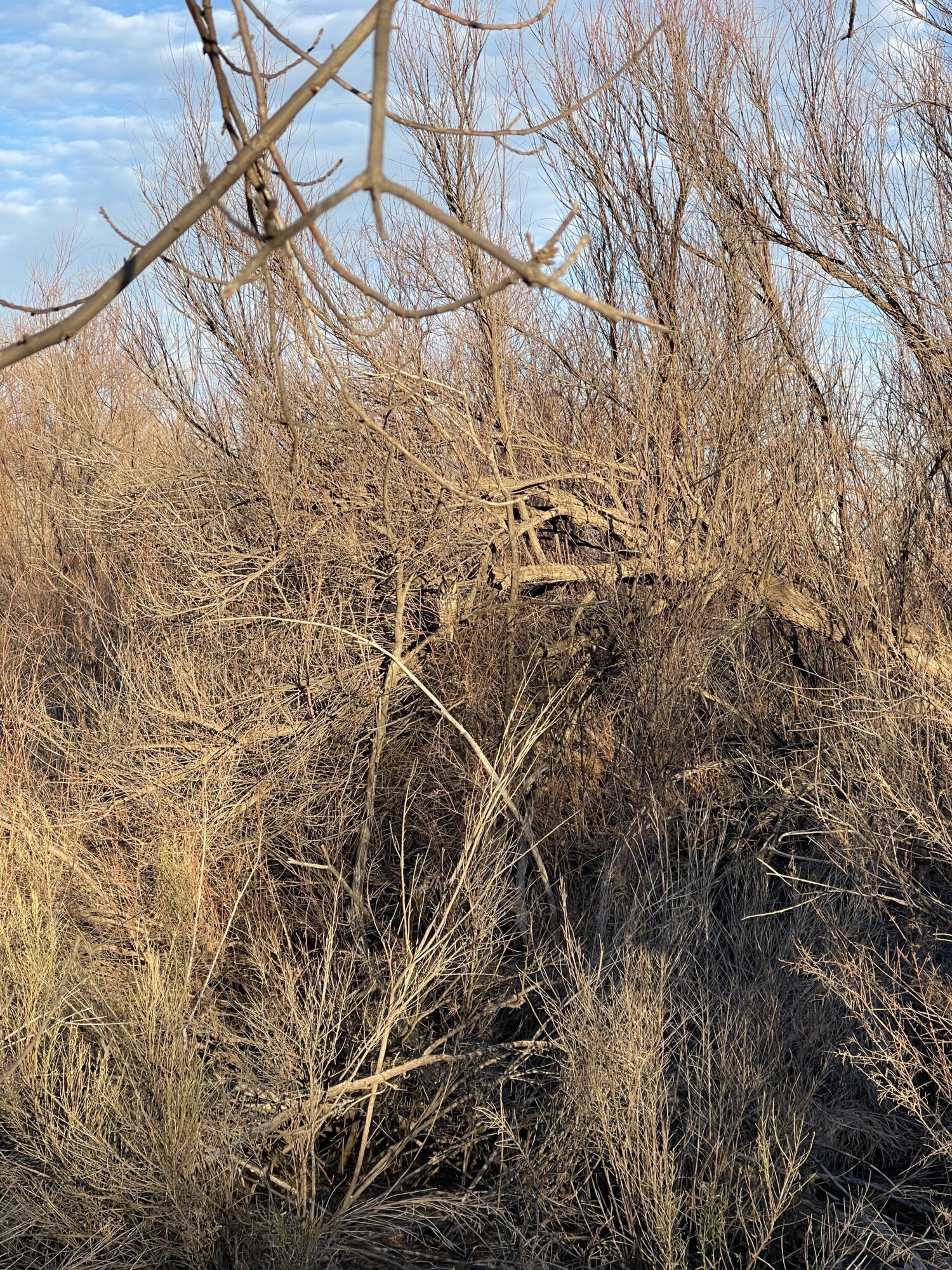
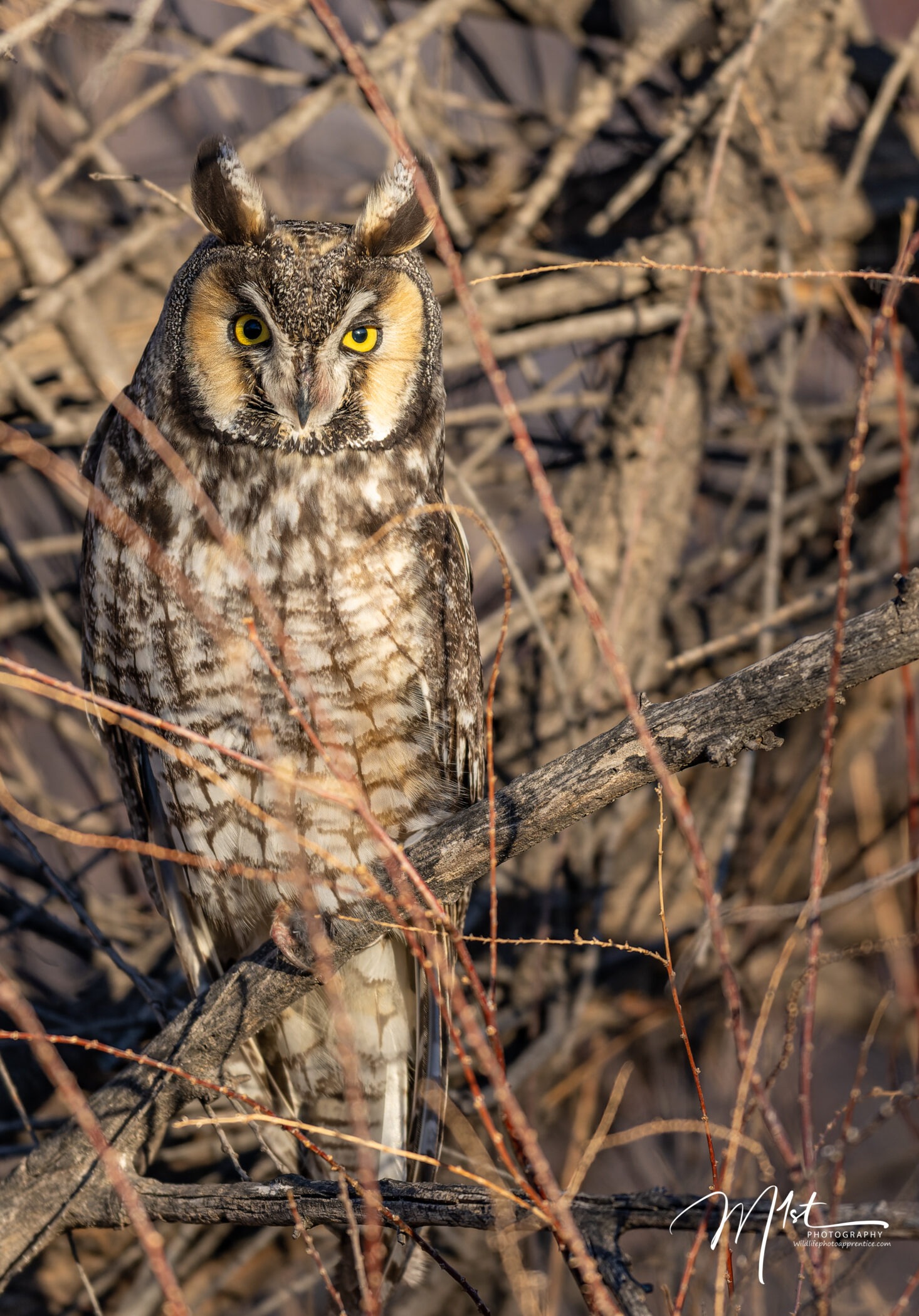
Be aware that other birds often alarm when owls are nearby. Owls are natural predators, and many smaller birds perceive them as threats to themselves or their nests. When birds detect an owl in their vicinity, they may exhibit alarm behaviors such as vocalizing loudly, mobbing the owl by flying around it aggressively or even dive-bombing it to drive it away.
This behavior, known as mobbing, is a common defense mechanism employed by smaller birds to protect themselves and their offspring from potential predators. Mobbing not only alerts other birds to the presence of the owl but also serves to harass and distract the owl, making it more difficult for it to hunt effectively.
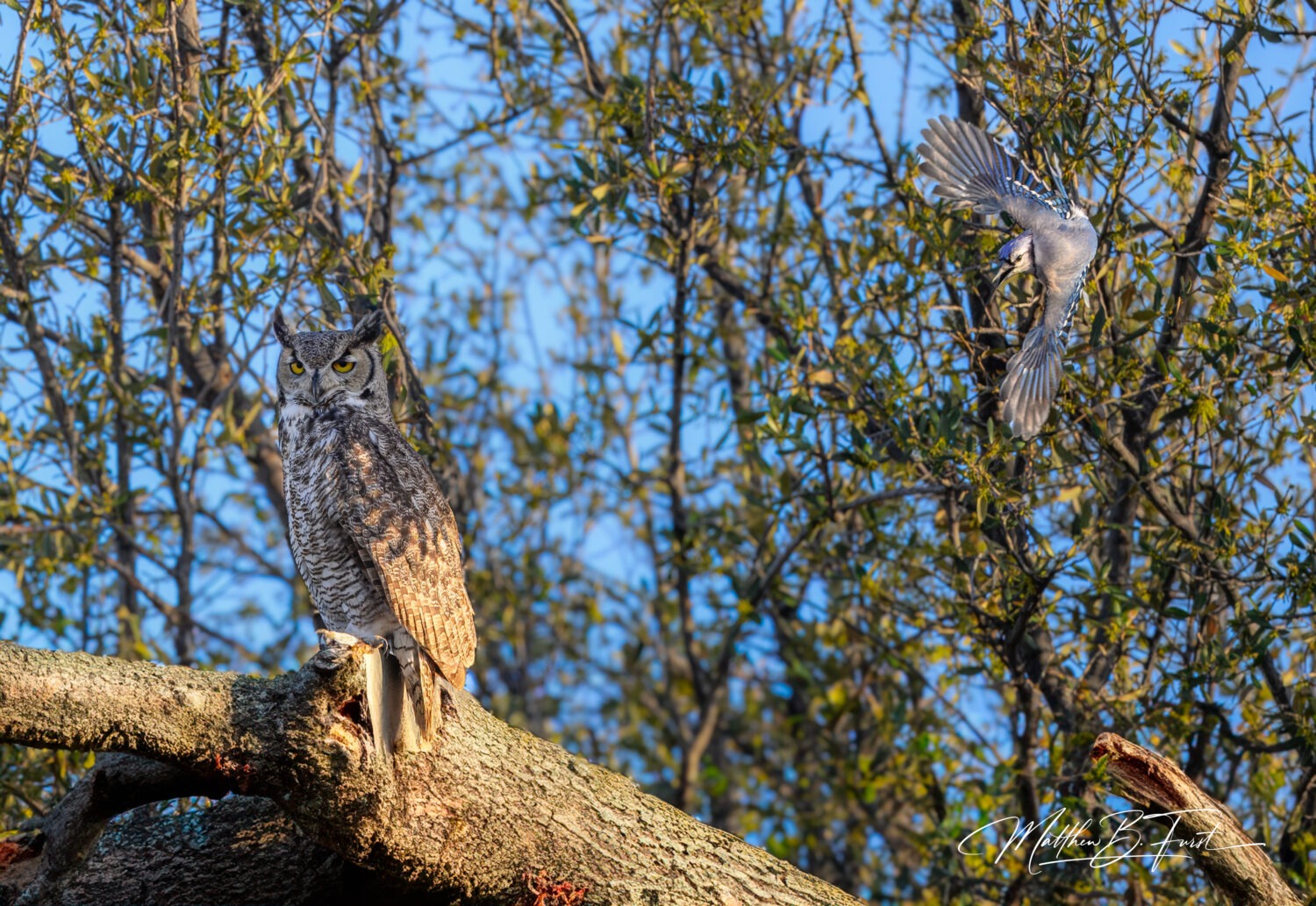
As you explore likely habitats, look for owl pellets, which are regurgitated remains of the owls’ prey. These pellets can often be found near roosting and nesting sites, providing a clue as to where the owls may be located.
Check E-birds or join birding or wildlife photography groups in the area, as they may have information about recent owl sightings or hotspots for finding them.
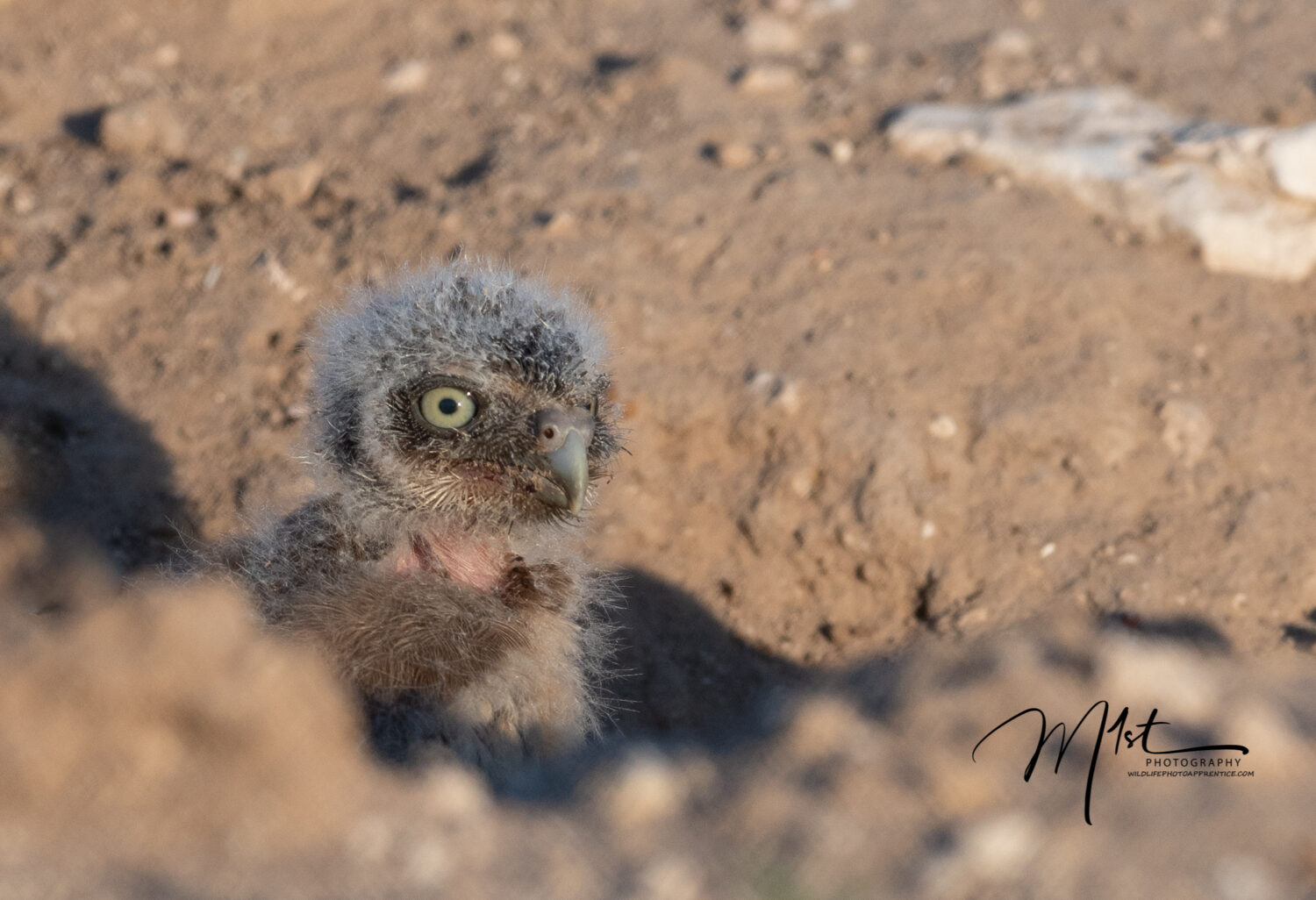
Be patient and take your time when searching for owls. Most owl species are nocturnal, meaning they are primarily active during the night. During the day, many owls roost in concealed locations to rest and avoid detection by potential predators. These roosting sites can vary depending on the owl species and the habitat in which they live. They are masters of camouflage and can be difficult to spot, so it may take some time and effort to find them. Respect the owls and their habitats by observing them from a safe distance and avoiding disturbing them. Owls are sensitive to human presence and can become stressed or agitated if they feel threatened.
Finally, listen for owl calls during the early morning and late evening hours when owls are most active. Each species of owl has a unique call that can help identify them. Here’s a description of the calls of Great Horned Owls, Barn Owls, Burrowing Owls, and Long-eared Owls and how to distinguish them from each other:
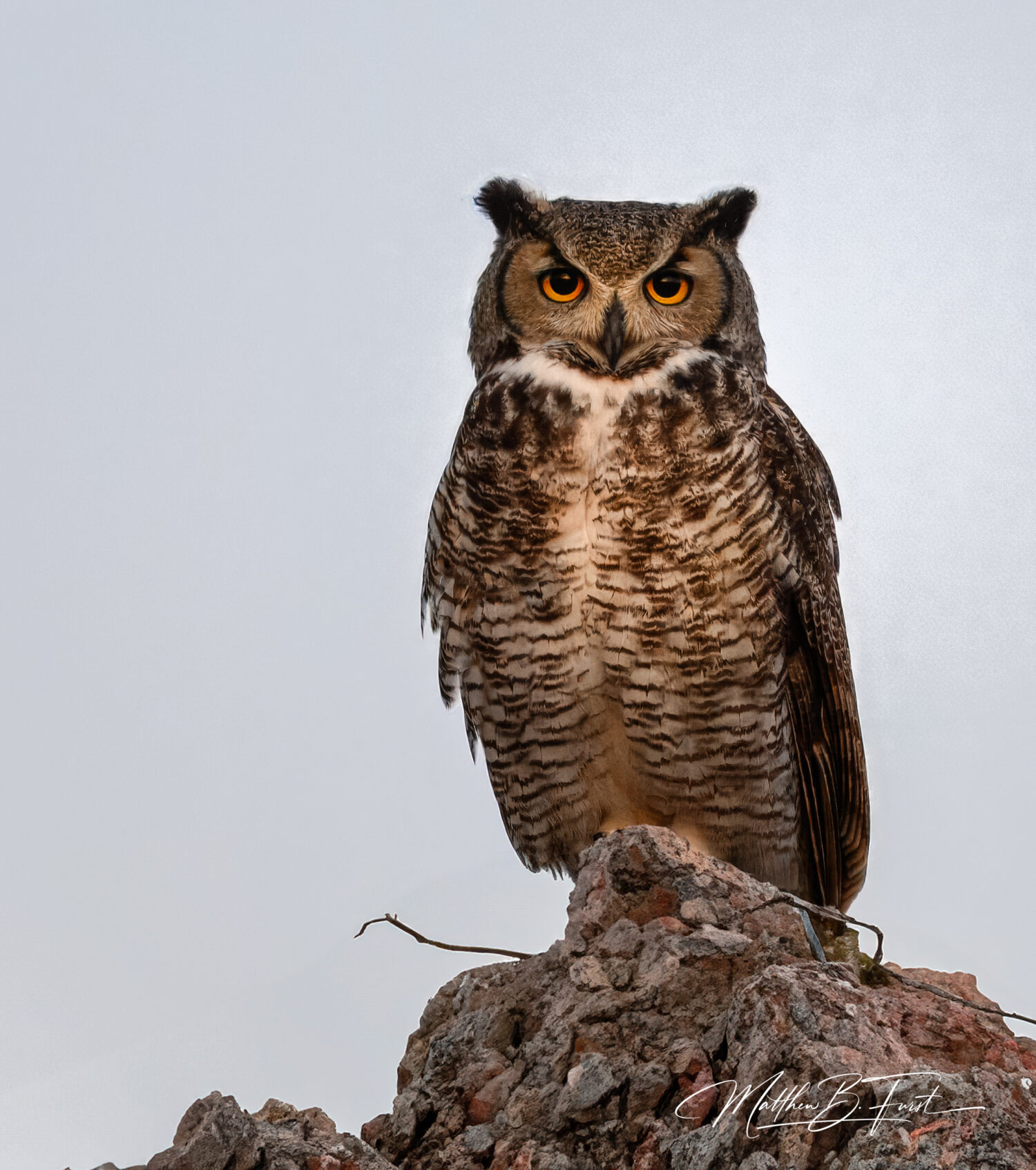
Great Horned Owls: The call of Great Horned Owls is a deep, resonant hoot that sounds like “Hoo-hoo-hoo-hoo” or “Who’s awake? Me toooo.” The call is often given in a series of four to five hoots. The male’s call is slightly lower in pitch than the female’s, but it can be difficult to distinguish between the two sexes.
Barn Owls: The call of Barn Owls is a screech or hiss that sounds like a long, raspy “shhhhhhh.” It can also be described as a high-pitched scream or a banshee-like wail. The call is often repeated in a series of two to three notes, with each note decreasing in volume.
Burrowing Owls: The call of Burrowing Owls is a series of coos or “gurgles” that sounds like “coo-coo-coo” or “purr-purr-purr.” The call is often given in a soft, soothing tone and can be difficult to hear from a distance.
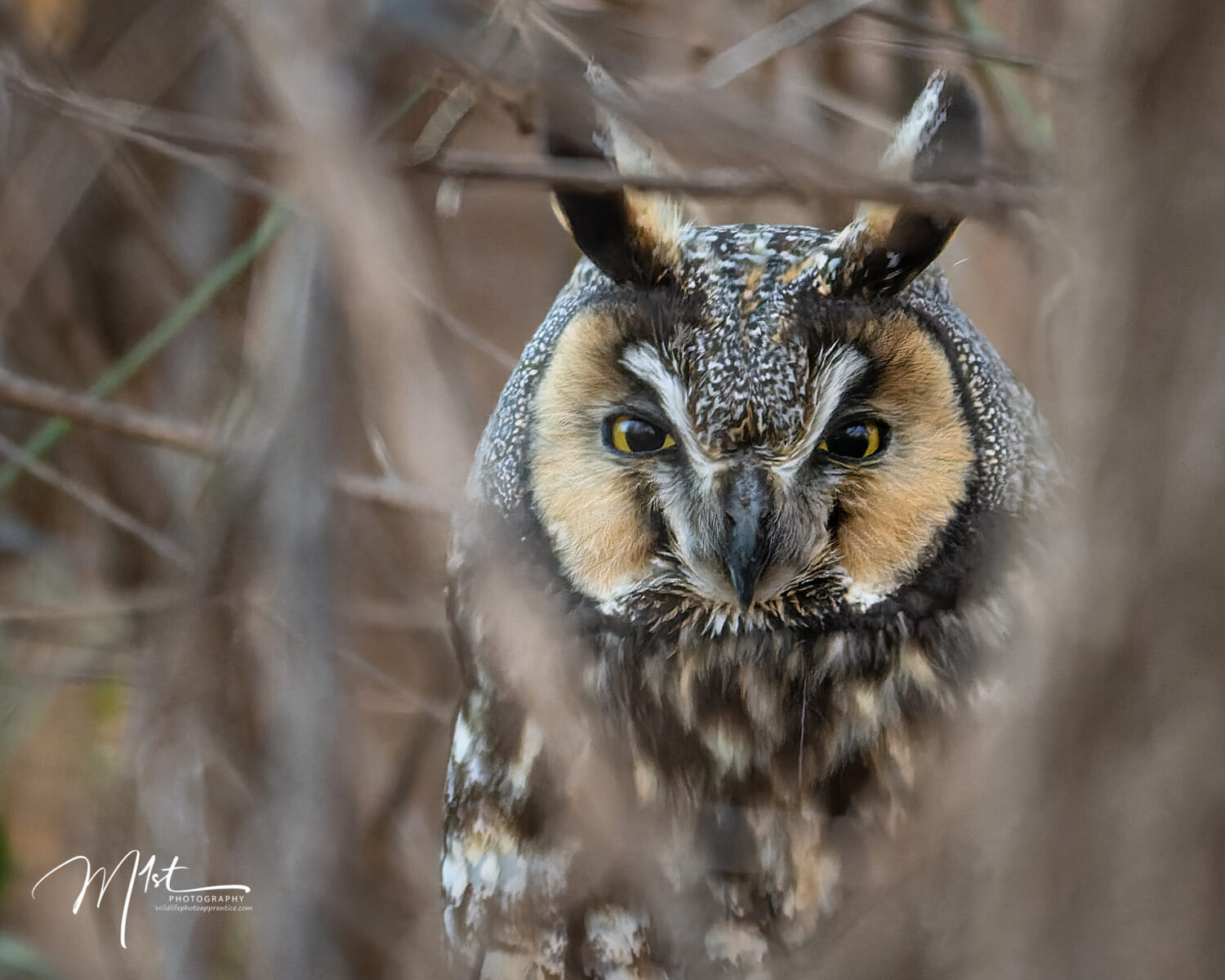
Long-eared Owls: The call of Long-eared Owls is a series of deep, rhythmic hoots that sound like “who, who, whoo, whooo.” The call is often given in a slow and deliberate manner, with each hoot increasing in volume and emphasis.
To distinguish between the calls of these four species, it’s helpful to listen for the unique patterns, pitches, and rhythms of their calls. Great Horned Owls have a deep and resonant hoot, often given in a series of four to five notes. Barn Owls have a high-pitched screech or hiss that can be quite loud and distinctive. Burrowing Owls have a soft, soothing coo or gurgle that is often difficult to hear from a distance. Long-eared Owls have a deep and rhythmic hoot that increases in volume and emphasis with each note. By listening for these unique characteristics, it’s possible to identify the species of owl based on their calls.
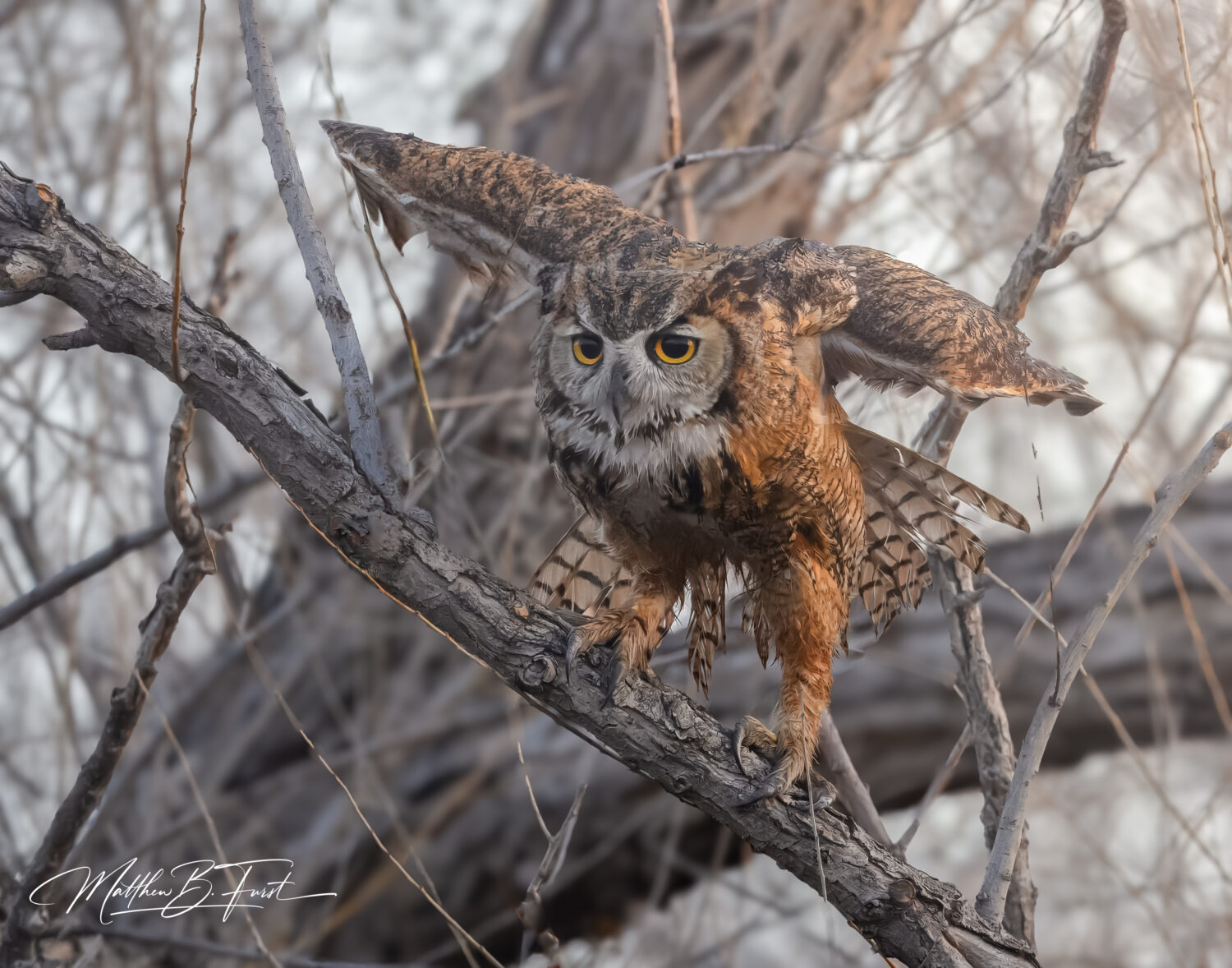
As we have discussed in other blogs, when photographing owls, especially in their natural habitat, there are several recommendations specific to technique and equipment that can help you capture stunning images:
Use a Telephoto Lens: Owls are often found in trees or perched high up, so a telephoto lens with a long focal length (200mm or more) will allow you to capture detailed shots from a distance without disturbing the birds.
Fast Lens with Wide Aperture: Since owls are most active during low-light conditions at dawn and dusk, a lens with a wide aperture (f/2.8 or wider) will help you achieve faster shutter speeds and capture sharp images in dim lighting.
Sturdy Tripod or Monopod: A stable support system is essential, especially when using telephoto lenses with long focal lengths. A tripod or monopod will help you maintain stability and reduce camera shake, resulting in sharper images, particularly in low-light conditions.
Shoot in RAW: RAW format preserves more image data and allows for greater flexibility in post-processing, which can be particularly useful when dealing with challenging lighting conditions or fine-tuning exposure settings.
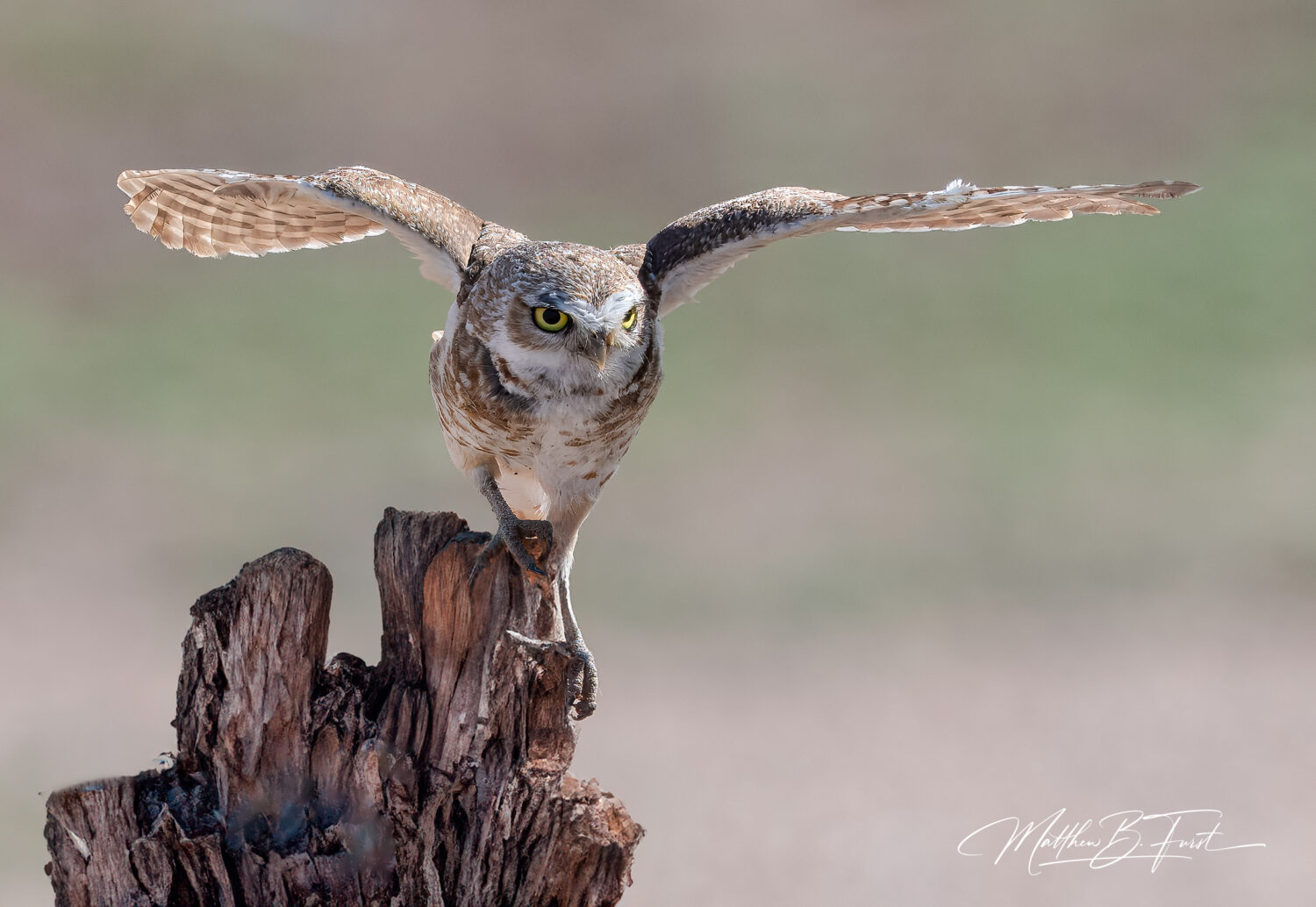
Silent or Quiet Shutter Mode: Owls have keen hearing and can be easily startled by loud noises. Using a camera with a silent or quiet shutter mode will help minimize disturbances and increase your chances of capturing natural behavior.
Patience and Observation: Owls can be elusive and may require long periods of observation to locate. Exercise patience and take the time to study their behavior and habits before attempting to photograph them. Pay attention to their movements and vocalizations to anticipate their actions.
Be Mindful of Disturbance: When photographing owls, prioritize the well-being of the birds and their habitats. Avoid approaching nests or disturbing roosting sites, and always respect wildlife regulations and guidelines.
Focus on the Eyes: The eyes are often the most captivating feature of owls. When composing your shots, focus on the owl’s eyes to create engaging and expressive photographs that draw the viewer’s attention.
Experiment with Composition: Explore different angles and compositions to capture unique perspectives of owls in their environment. Experiment with framing, depth of field, and background elements to create visually compelling images.
Practice Field Craft: Develop your field craft skills to minimize your presence and maximize your chances of getting close to owls without causing disturbance. Move slowly and quietly, and use natural cover to conceal yourself while observing and photographing the birds.
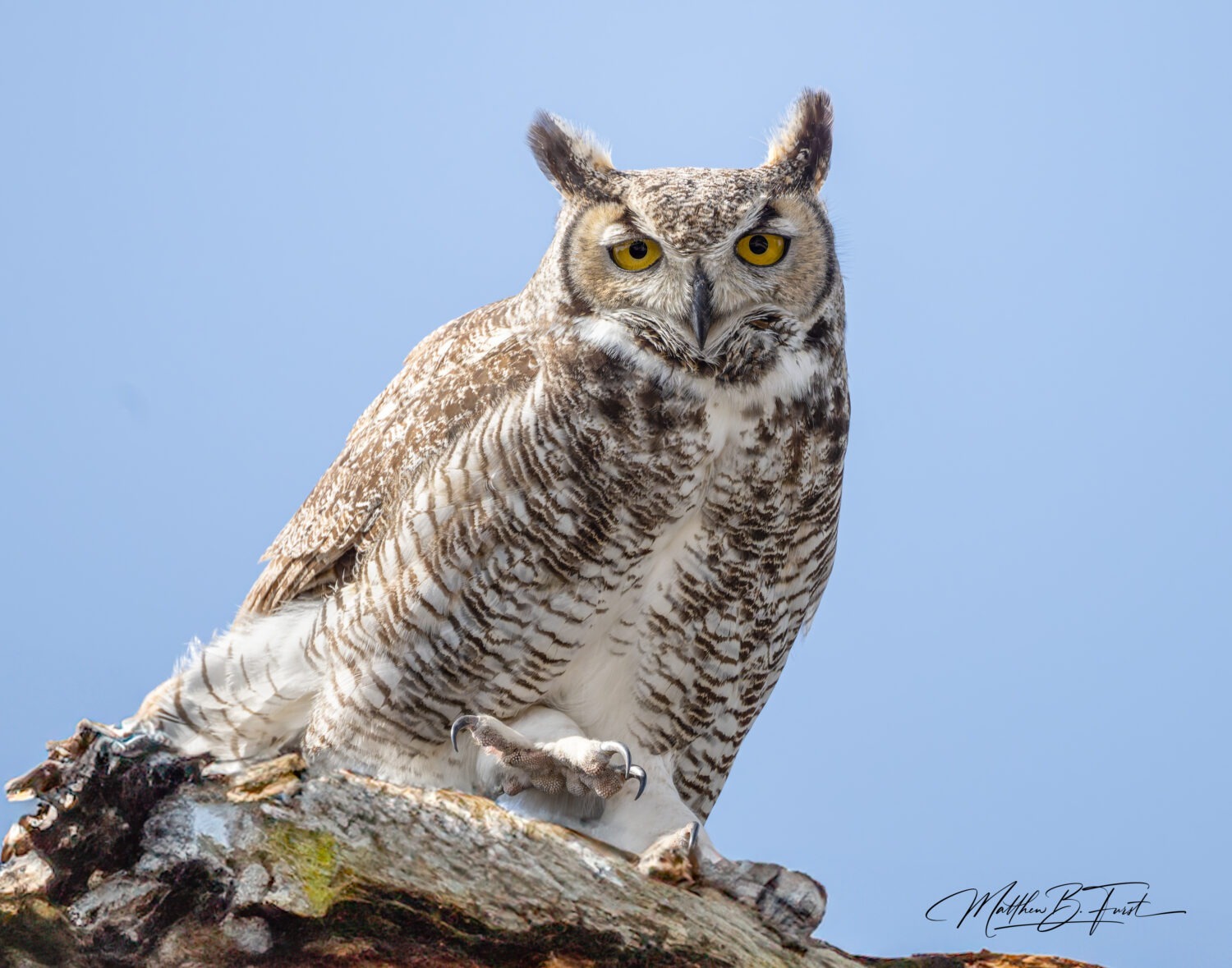
In conclusion, studying owls and their behaviors is crucial for wildlife photographers who want to capture stunning photographs of these fascinating creatures. Understanding their habitats, calls, and behaviors can help photographers locate and approach them safely, while also providing a deeper appreciation for their unique characteristics. Photographing owls can be both fun and challenging, but the rewards of capturing these elusive creatures in their natural habitats are truly remarkable. By investing time and effort in studying and photographing owls, wildlife photographers can contribute to our understanding and appreciation of these remarkable birds of prey.
